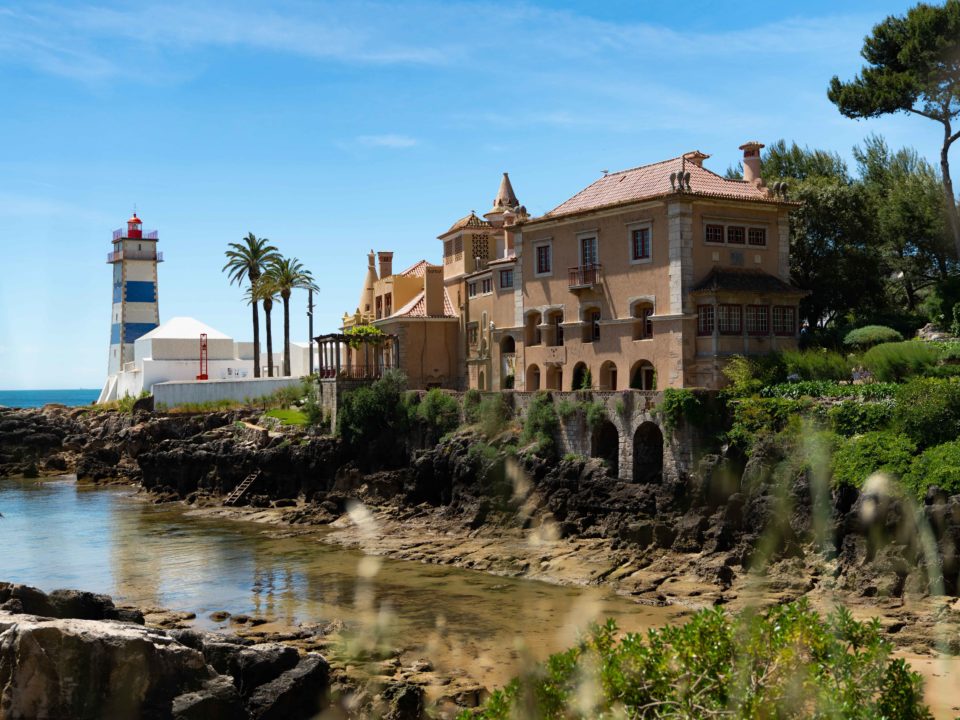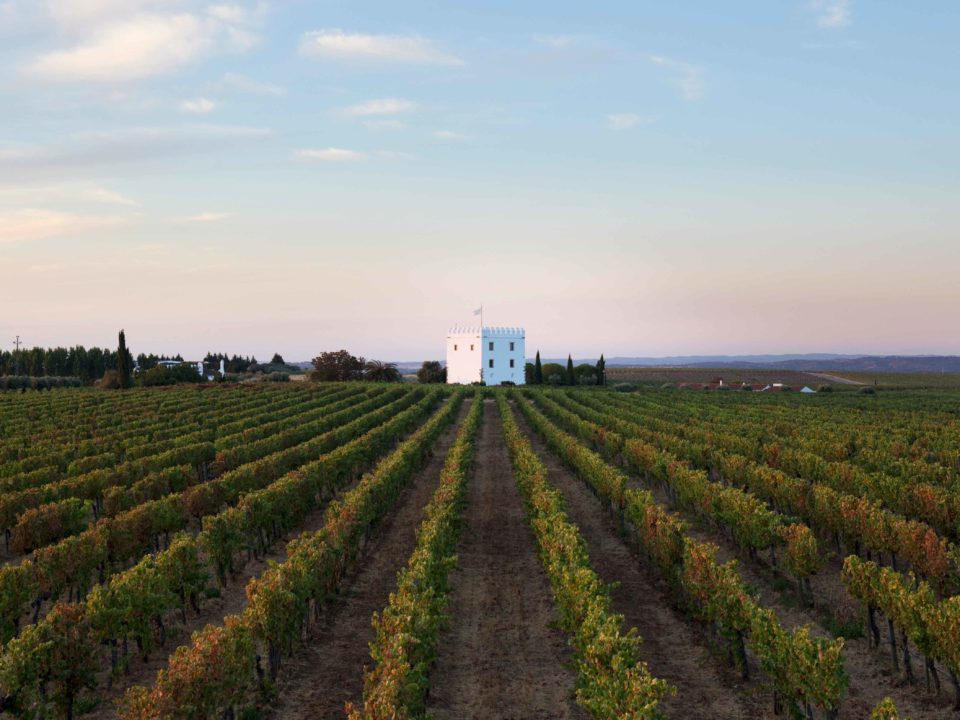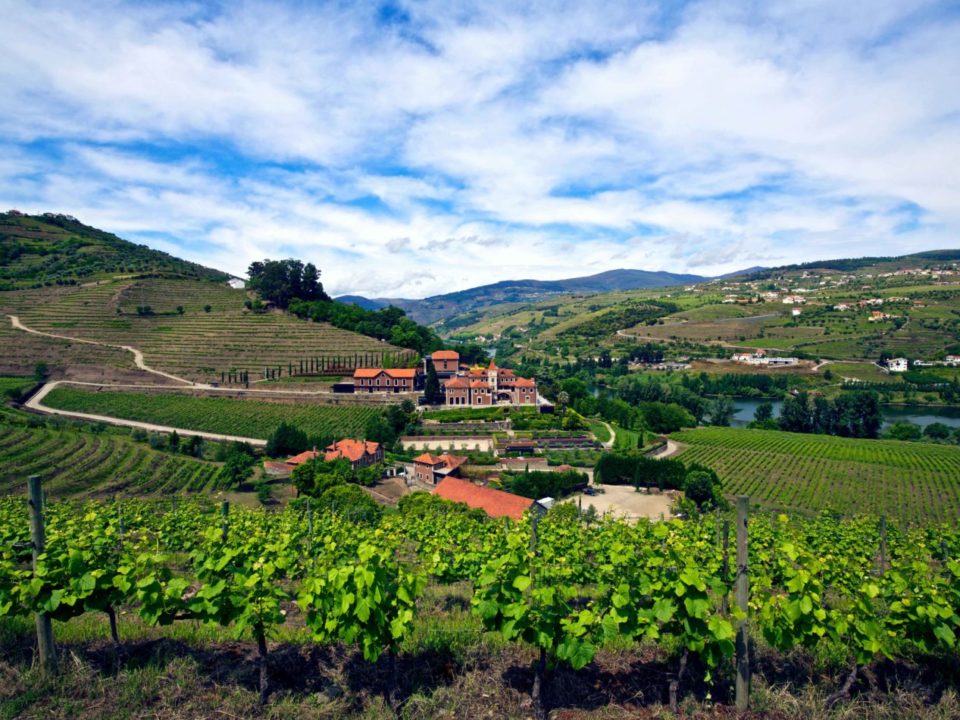Where there is food, there must be wine. Lots of it, in Portugal’s case. Moving away from their reputation for making only fortified wines – namely port and madeira – vintners across the country have toiled over the last decade or so to show a different, fresher side to Portuguese table wine; tables we can’t wait to be back at.
CASCAIS
On a tiny strip of craggy Atlantic coastline lies Colares, fractionally north of Cascais and only an hour west of Lisbon. Due to its sandy soils (vines instead grew wild on a beach), Colares skipped the pandemic known as ‘phylloxera’ – a disease that that wiped out most of the world’s vines in the early 1900s – and consequently boasts some of the oldest surviving grapevines in Europe.
Adega Regional de Colares & Viúva Gomes
The region has found itself in the spotlight recently, because of its refined, older wines. For a taste of tradition, visit the cellars of Adega Regional de Colares or Viúva Gomes. The whites (made from malvasia) and reds (made from ramisco) have an unmistakably salty character from the surrounding sea air, plus the huge, old Brazilian foudres (wood barrels) that fill the wineries are a sight to behold.
Casal de Santa Maria
For something a little different, visit Casal de Santa Maria. Previously owned by an eccentric baron, the winery has been making traditional wines in the region for centuries, but also experiments with international grape varieties such as sauvignon blanc and pinot noir. Finally, it would be rude not to finish the day at Restaurante Piscina Azenhas do Mar, with a glass of vinho verde in hand as you gaze over the Atlantic. Order a plate of octopus rice and some percebes – strange barnacles of the deep and a rare delicacy of the region.
Where to stay Settle in for some more sea-gazing at cliff-edge Farol Design Hotel.
THE ALENTEJO
Known for its cork trees, pink marble and pata negra (black pig), the Alentejo is the largest wine-producing region in Portugal. Having a reputation for housing bigger, more commercial wineries, there are now some producers who are working hard to focus on quality over quantity and elegance over strength.
Cabeças do Reguengo
João Afonso of Cabeças do Reguengo is one of them. A ballet-dancer-turned-wine-writer-turned-winemaker, João works with his daughter Ines to make a range of wines – from a fizz made in the blanc de blanc style (with chardonnay only) to a field blend called Respiro (where red and white grape varieties are grown freely together) – that are light, natural and downright delicious. And quite literally made in their garage. They are tiny, so it’s more pop in and pick up some wines, rather than there being a tasting room and restaurant.
Esporão
On the other end of the spectrum, you have Esporão, a grand, impeccably designed winery flanked by endless vineyards and ancient olive trees. They’ve done a lot to establish quality in the Alentejo. Plus, don’t miss a walk around their olive mill – and a taste of their oils – where the walls are made entirely of cork and sustainability is the name of the game.
Where to stay End the day at oenologically-minded hotel São Lourenço do Barrocal, which has its own groves and vineyards, on an estate that was integral to laying the first vines around Monsaraz.
THE DOURO
A three-hour drive along winding roads to the east of Porto, you’ll find the Douro Valley. With its rolling hills and amphitheatre-like vineyards, the area is a classified Unesco World Heritage site for its port-wine viticulture and has become a holiday destination in its own right.
Dirk Niepoort
Producers such as Dirk Niepoort, the enfant terrible of the Portuguese wine world by way of Switzerland, has inspired a lot of change in a region traditionally known for port production. Although Dirk no longer has a tasting room, you’ll see his wines on the shelves of nearly every (good) wine shop – from his ports to a riesling and his infamous Clos du Crappe, a Douro take on Burgundy.
Quinta de la Rosa
It is still relatively rare for adegas (wine houses) in the Douro to open their doors to the public, so make the most of an idyllic visit to Quinta de la Rosa. They oversee the entire process of port production on their winery (most port houses make their wine in the Douro and store it in Vila Nova da Gaia in Porto) and make some lovely table wines.
Where to stay Quinta dos Murças and Six Senses Douro Valley are two riverside, vine-surrounded hotels, the former with its own on-site winery.
Whistle whetted? Sample the rest of our hotels in Portugal and worldwide wine escapes.
Aimee Hartley is the founder of the excellent, wine-centric Above Sea Level magazine.






